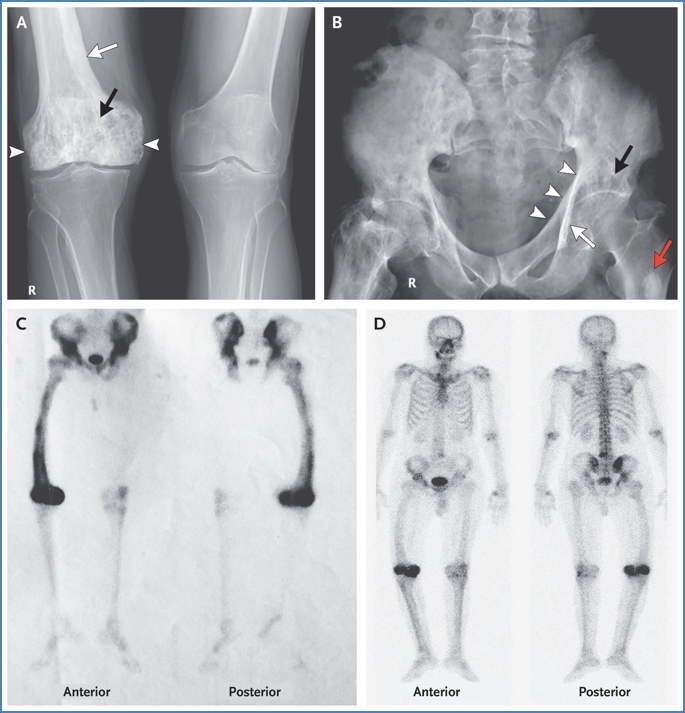Table of Contents
Overview – Paget’s Disease
Paget’s disease of the bone is a chronic skeletal disorder marked by excessive bone remodelling, resulting in enlarged, deformed, and weakened bones. Though often asymptomatic in its early stages, it may cause bone pain, deformity, arthritis, and serious complications such as pathological fractures and nerve compression. The hallmark biochemical feature is elevated alkaline phosphatase with normal calcium and phosphate levels. Early recognition and treatment are crucial for preventing permanent bone changes and reducing complications associated with Paget’s disease.
Definition
Paget’s disease is a disorder of abnormal bone remodelling characterised by excessive osteoclastic bone resorption followed by disorganised osteoblastic bone formation, leading to structurally unsound and deformed bones.
Aetiology
- Genetic predisposition
- May occur sporadically or with a family history of the condition
Morphology / Pathophysiology
- Continuous, disorganised bone turnover → structurally weak bone
- Thickened yet fragile bones due to unbalanced osteoclastic and osteoblastic activity
- Affects one or multiple bones
Clinical Features
- Typical age: Young to middle-aged adults
- Symptoms:
- Bone pain (most common symptom)
- Arthritis due to joint involvement
- Pathological fractures despite thickened bone
- Skeletal deformities (e.g. bowing of long bones)
- Nerve compression syndromes (e.g. spinal stenosis, deafness from cranial nerve compression)
Investigations
- X-ray:
- Mixed lytic and sclerotic lesions
- Advancing osteolysis in long bones or skull
- Compensatory osteoblastic activity → bone thickening
- Blood tests:
- Elevated alkaline phosphatase (ALP)
- Normal serum calcium and phosphate

Management
- Bisphosphonates (e.g. alendronate, risedronate):
- Inhibit osteoclast-mediated bone resorption
- Calcitonin:
- Also suppresses osteoclastic activity (less commonly used now)
- Symptomatic treatment: Analgesia, physical therapy
- Orthopaedic referral for severe deformity or fracture risk
Complications
- Pathological fractures
- Skeletal deformities
- Osteosarcoma (rare but serious)
- Neurological complications (e.g. deafness, spinal cord compression)
Summary – Paget’s Disease
Paget’s disease of the bone is a chronic metabolic condition that results in structurally abnormal and deformed bones due to excessive bone turnover. It can be managed effectively with bisphosphonates and calcitonin if caught early. Complications such as fractures, deformity, and even osteosarcoma highlight the importance of early detection. For further context, see our Musculoskeletal Overview page.